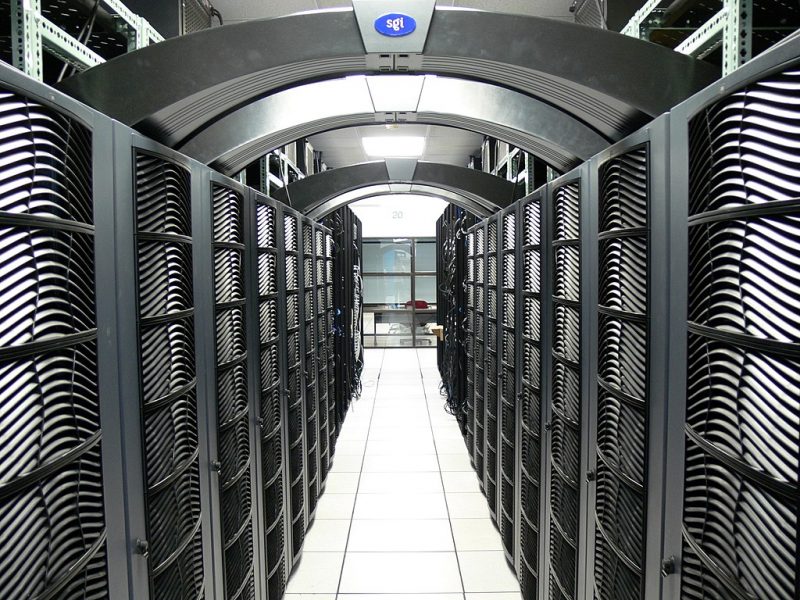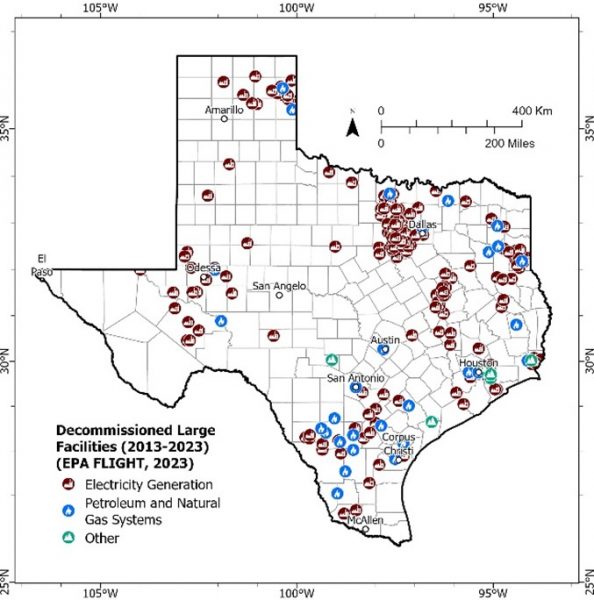New Research Program Promotes Sustainable Data Center Growth in Texas
May 20, 2025

The University of Texas at Austin is launching a new research initiative to help Texas capitalize on the influx of data centers coming into the state without overloading the Texas power grid.
Data centers could potentially help revitalize the economy in parts of the state. However, the industry’s growth, along with that of other large-load customers – namely large-scale industrial sites and cryptocurrency – could push peak electricity above what the grid can supply.
Demand from these sectors could exceed the available energy supply by 6.2% by next year, and by as much as 32.4% by 2029, according to projections from the Electric Reliability Council of Texas (ERCOT).
UT researchers outline the issues in a new white paper, “Sustainable Data Center Growth in Texas: Energy, Infrastructure, and Policy Pathways.” They are also bringing together affected industries, power providers and policy and regulatory agencies in a workshop in September.
“This effort is to help policy makers and industry leaders align data center expansion with Texas’ energy strengths,” said Lorena Moscardelli, the state geologist of Texas and director of the Bureau of Economic Geology at the UT Jackson School of Geosciences. “I really believe we have an opportunity to create a model for responsible, innovative, and high-value data infrastructure development.”
The influx of data centers isn’t unique to Texas. Worldwide, global data generation surpassed 149 zettabytes in 2024, the equivalent of 149 trillion gigabytes of data. If each gigabyte were a single-page document, the resulting stack of paper could reach the Moon and back almost 20 times, according to the white paper.

Texas is particularly attractive to the data center industry because of its business-friendly environment, relatively inexpensive power, and geographic location, said Ning Lin, chief economist at the bureau and lead author of the white paper. In addition, the state produces 30% of the nation’s primary energy and leads in electricity generation from natural gas, wind, and solar. It also has an abundance of land and significant industrial infrastructure already in place.
This confluence of factors could help reduce the impact of data centers on the grid – if strategically planned, said Lin. For instance, while the crypto industry powers down when energy is expensive and powers back up when the costs drop, both data centers and oil and gas producers do not have the luxury of varying their load. Instead, both require steady, uninterrupted electricity to function effectively. This shared need for reliable power creates a unique opportunity for synergy between the sectors, especially in regions like West Texas where energy demand is growing rapidly and transmission remains limited. Lin suggests that this synergy could take the form of off-grid power stations.
“The recently approved construction of new 765-kilovolt high-voltage transmission lines by Texas regulators is encouraging, but these projects will take years to complete,” Lin said, “So off-grid is an option for both sectors.”
Other potential options could involve using energy infrastructure left over from old industrial sites to help power new facilities. There are examples across Texas and the U.S. of leveraging existing industrial and energy infrastructure for incremental data center development, said Lin.
“We’re really just trying to get the conversation started and bring all the players to the table,” she said. “Texas is really well-positioned for the data center industry. The question is, how do we align to enhance energy efficiency, repurpose existing infrastructure, and help drive economic development in communities across the state?”
The Bureau of Economic Geology previously analyzed the load growth impacts of oil and gas electrification for ERCOT. This new research builds on that work by mapping how digital infrastructure adds to the state’s evolving energy demand profile. By integrating energy demand from both traditional industrial users and emerging large-load consumers like data centers, the research offers a more comprehensive view of Texas’s evolving grid needs.
The bureau will hold the data center workshop on Sept. 18, 2025, and is launching a new industrial affiliates program to cover issues involved with data center and digital infrastructure. The goal is to chart a path for Texas that supports sustainable data center expansion while preserving energy reliability, optimizing land and water use, and maximizing economic benefits for communities across the state.
In addition to Jackson School of Geosciences researchers, the new research initiative brings together scientists and researchers from the UT Cockrell School of Engineering and Texas Advanced Computing Center (TACC) with support from the UT Energy Institute. External collaborators include the Infrastructure Masons (iMasons), and the Texas Oil and Gas Association (TXOGA).
For more information, contact: Anton Caputo, Jackson School of Geosciences, 210-602-2085; Monica Kortsha, Jackson School of Geosciences, 512-471-2241; Constantino Panagopulos, University of Texas Institute for Geophysics, 512-574-7376; Julia Sames, Department of Earth and Planetary Sciences, 210-415-9556.
